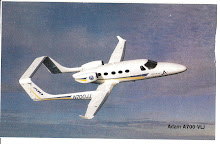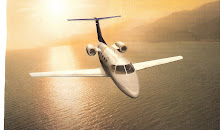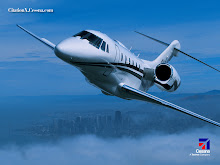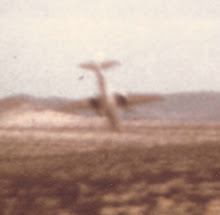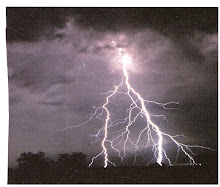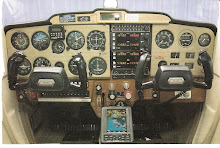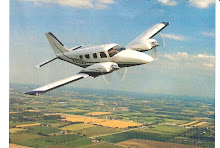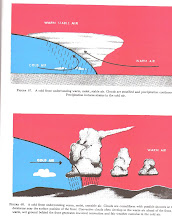To all readers:
Robert Shaw passed away on August 11, 2008 after a long illness at age 91.
Among our last conversations, he expressed sorrow that he would not be able to continue writing this blog. He had a folder full of ideas for postings.
After more than 70 years of aviation experience, he wanted to share his knowledge with others. This blog became that outlet for him.
He will be missed.
As always,
Thanks for listening, and safe flying to you all.
Saturday, August 16, 2008
Saturday, July 12, 2008
June 2008 Accident / Incident Accounting
Hi Readers:
Following my long hospital stay, delays in NTSB reporting of accidents, as indicated in May and June 2008, I'm having to struggle to keep current. May passed like a flash and it was well into July before all of the June accidents were accounted for. To make matters worse, the total, fatal and non-fatal picture does not look good to me.
For the moment, let's drop the incidents in consideration of just what they are -- accidents happening, reflecting current operations and considering many factors. Incidents having a trend of their own -- minor to fatal consequencies, yet replete with safety of flight considerations.
Now let's look at the years' accidents including June - we find a relative steady climb of total accidents in January of 84 to 137 in May and 114 in June. We find the same general climb of non-fatal accidents from January 0f 62 to 98 in May and back to 82 in June. For the same period the fatal accidents varied from 22 in January to 39 in May and back to 33 in June.
Those figures must be considered in light of two important factors, the estimated annual increases in flying (seasonal mainly), increases in Part 135 and Part 137 flying; and in Helicopter, Sport, and amateur-built aircraft flying - and also where we find increases in fatal accidents. In May for instance, Helicopter accidents increased from 9 to 12 (5 fatal accidents) and on June 29, 2008 two B407 medical evacuation helicopters managed to collide during the landing of both at the Flagstaff, AZ hospital in late afternoon with 6 reported fatalities. The NTSB is still investigating as they are in so many fatal accidents, many on foreign request, to accomplish their mission.
All of this, of course, in the face of several types of economic conditions - the increasing price of fuel, and increasing costs of doing business - both airline and GA and weather and alternative airport costs. And many of the pilot-operational problems are still with us. VFR flying into IFR conditions, mix of pilot proficiency between small jets and and reciprocating engine airplanes, lack of weather-flight analysis.
All of the accidents need investigating--we must get to the true cause factors. The cause of the accident was the one that made the accident inevitable - but there are many factors that played a part in the accident. We must know those factors as well. We must have more and current analysis of accidents - ferret out those accident factors and apply solid safety of flight actions.
We'll see what July brings. Thanks for listening.
Robert Shaw
Following my long hospital stay, delays in NTSB reporting of accidents, as indicated in May and June 2008, I'm having to struggle to keep current. May passed like a flash and it was well into July before all of the June accidents were accounted for. To make matters worse, the total, fatal and non-fatal picture does not look good to me.
For the moment, let's drop the incidents in consideration of just what they are -- accidents happening, reflecting current operations and considering many factors. Incidents having a trend of their own -- minor to fatal consequencies, yet replete with safety of flight considerations.
Now let's look at the years' accidents including June - we find a relative steady climb of total accidents in January of 84 to 137 in May and 114 in June. We find the same general climb of non-fatal accidents from January 0f 62 to 98 in May and back to 82 in June. For the same period the fatal accidents varied from 22 in January to 39 in May and back to 33 in June.
Those figures must be considered in light of two important factors, the estimated annual increases in flying (seasonal mainly), increases in Part 135 and Part 137 flying; and in Helicopter, Sport, and amateur-built aircraft flying - and also where we find increases in fatal accidents. In May for instance, Helicopter accidents increased from 9 to 12 (5 fatal accidents) and on June 29, 2008 two B407 medical evacuation helicopters managed to collide during the landing of both at the Flagstaff, AZ hospital in late afternoon with 6 reported fatalities. The NTSB is still investigating as they are in so many fatal accidents, many on foreign request, to accomplish their mission.
All of this, of course, in the face of several types of economic conditions - the increasing price of fuel, and increasing costs of doing business - both airline and GA and weather and alternative airport costs. And many of the pilot-operational problems are still with us. VFR flying into IFR conditions, mix of pilot proficiency between small jets and and reciprocating engine airplanes, lack of weather-flight analysis.
All of the accidents need investigating--we must get to the true cause factors. The cause of the accident was the one that made the accident inevitable - but there are many factors that played a part in the accident. We must know those factors as well. We must have more and current analysis of accidents - ferret out those accident factors and apply solid safety of flight actions.
We'll see what July brings. Thanks for listening.
Robert Shaw
Thursday, June 19, 2008
2008 NTSB Aircraft accident/Incident Accounting
Hi Readers: Having been in and out of the hospital these past few weeks, I've fallen a little behind in the 2008 Accident/Incident reporting and accounting. Since the month of May has passed and June is well on it's way, I've decided to account for the two months together, making the important comparisons and discussing the safety of flight trends.
Meanwhile, I hope you are aware of the current changes taking place in the Aviation Industry in an effort to keep our economics balanced and stable. The Airlines, in addition to the mergers and agreements within themselves, are cutting back on flights and routes, pilots, flight attendants, mechanics, etc. to reduce operational costs, such as the high cost of fuel; and the sting of passing the fuel costs to the ticket-buyer is having a reverse effect on travel demand. And the airline services are getting worse and worse. Travelers are looking toward train and bus transportation - (actually we need both in addition, not as an alternate).
The GA User Fee is rearing its ugly head again, after having been reported as settled; the demand for production of new jets and other airplanes is apparently beginning to "sag" in the middle; and all the employee cutbacks are beginning to add to the other problems - all economics. The FAA Controller problems, shortages and training, are still with us - in spite of much study and review (by whom?).
It appears to me that the present Administration does not understand, or is not willing to understand, or study the current problems taking place in the Aviation Industry. And Congress keeps itself busy with it's political nitpicking, most of the time preventing a reasonable vote on the issues it considers, and the aviation problems seem to be at the bottom of the list. What's more, the aviation problems seemto be divided between so many committees - the aviation Industry, knit from pilot to airplanes to airspace to airports, etc., must be considered within itself, en total, to get the fair picture.
Who is actually oversiteing the aviation problems - the problems that go together, the solution of which provides our prime mode of transportation. Yes, you and I, and I've said many times that we must start looking at the total aviation picture, with the long-term view in mind.
Enough for this time. Keep reading, and thanks! Robert Shaw.
Meanwhile, I hope you are aware of the current changes taking place in the Aviation Industry in an effort to keep our economics balanced and stable. The Airlines, in addition to the mergers and agreements within themselves, are cutting back on flights and routes, pilots, flight attendants, mechanics, etc. to reduce operational costs, such as the high cost of fuel; and the sting of passing the fuel costs to the ticket-buyer is having a reverse effect on travel demand. And the airline services are getting worse and worse. Travelers are looking toward train and bus transportation - (actually we need both in addition, not as an alternate).
The GA User Fee is rearing its ugly head again, after having been reported as settled; the demand for production of new jets and other airplanes is apparently beginning to "sag" in the middle; and all the employee cutbacks are beginning to add to the other problems - all economics. The FAA Controller problems, shortages and training, are still with us - in spite of much study and review (by whom?).
It appears to me that the present Administration does not understand, or is not willing to understand, or study the current problems taking place in the Aviation Industry. And Congress keeps itself busy with it's political nitpicking, most of the time preventing a reasonable vote on the issues it considers, and the aviation problems seem to be at the bottom of the list. What's more, the aviation problems seemto be divided between so many committees - the aviation Industry, knit from pilot to airplanes to airspace to airports, etc., must be considered within itself, en total, to get the fair picture.
Who is actually oversiteing the aviation problems - the problems that go together, the solution of which provides our prime mode of transportation. Yes, you and I, and I've said many times that we must start looking at the total aviation picture, with the long-term view in mind.
Enough for this time. Keep reading, and thanks! Robert Shaw.
Sunday, June 1, 2008
April 2008 Accounting of NTSB Accidents/Incidents - Part I
Hi Readers:
Here is the promised accounting of the April 2008 Accidents/Incidents. Some changes from March have occured. The GA flying seems to be in full swing. Maybe no for the better. We'll see.
There was a total count of 118 accidents/incidents reported for the 30 day month -- 5 were non-US, 4 were incidents, 4 were Part 135, 4 were agricultural (Part 137), 1 was public use, and there was one unknown scheduled type with three fatalities in Parma, Italy. Of the total there were 26 fatal accidents, with 85 fatalities, and 92 non-fatal accidents. Three of the fatal accidents were non-US. There were 9 Alaska accidents this month, one of which had 4 fatalities. There were 4 incidents - an Airbus A320 experienced severe turbulence from Denver to Phoenix, where 4 flight attendants and 3 passengers sustained minor injuries; an Eclipse EA500 experienced a stuck rudder trim during a simulated SE approach to Flint, Michigan; a Bombardier CL 600 lost both engines during taxi at Minneapolis St. Paul; and a Hill Hartz CB-1 pilot lost control during landing in gusty winds in Erie, Colorado.
Each month we are having more and more experimental / amateur-built aircraft accidents - an indication of greater interest in this type of flying and also sport flying. However, there appears a need for closer inspection of these airplanes by the FAA. There were 6 of these experimental / amateur-built type accidents, unfortunately all fatal, involving low altitude flight and loss of control. There we two on April 7th; The first a Cartwright RV-10 impacted trees and terrain in Seale, Alabama following a missed approach at Euaufauley, Alabama. IFR conditions prevailed and the pilot was instrument rated. The airplane was seen as much as 400 ft above and 1200 ft below the assigned altitude during the last 14 minutes of flight by the controller on radar. The pilot possessed 526 total hours of flight experience, 63 of which was in the accident airplane.
The second accident on April 7th a Glassair III impacted terrain near Cheyenne, Wyoming, on a personal cross country flight from Greybal, Wyoming to Larned, Kansas, no flight plan.
On April 13th, an amateur-built Lancain collided with the ground shortly after takeoff in Lakeland, Florida. VFR condition prevailed. The pilot was ovserved having difficulties closing the canopy prior to takeoff. A witness also reported seeing the canopy moving during takeoff, then the airccraft lost power and went down. On April 17th an E.B. Wood Phantom XI aircraft registered to and operated by a student pilot crashed into a wooded area during an approach to Warrenton, Virginia. The pilot had been performing touch-and-gos landings. The Air Worthiness Certificate awarded the airplane ahd an airframe time of 94 hours. The pilot was 63 years of age. On April 21st an amateur-built Quicksilver GT500 impacted trees and terrain near Paris, Tennessee on an aerial application flight. An engine failure occured. The airplane used automotive fuel, and had experienced abrupt engine failure previously. On April 23rd, the pilot of a Lancain IV-P experienced loss of control during takeoff from Mesa, Arizona on a day flight to Santa Ana, California. Witnesses observed smoke trailing from the airplane and the pilot was advised. The pilot did not respond and the airplanedived into an orange grove, exploded, and was consumed by fire.
The remaining fatal accidents (19), evermore serious and frought with errors, and the 92 nonfatal accidents will be covered in Part II.
Not to end on a tragic occurrence, but lessons must be learned, sometimes the hard way. Everybody loves sports, and skydiving is very popular these days. Here is a skydiving accident that should never have happened. On April 19th a Cessna 206 skydiving flight crashed in Mt. Vernon, Missour. After climbing to 10,500 ft, the pilot signaled the 6 parachutists to open the door. The parachutist informed the pilot that he had overshot the landing zone. The pilot then started a right turn, then the stall warning horn sounded, the airplane stalled, and rolled off to the right into a spin. Three chutists exited safely, a fourth broke his right leg in exiting the plane. The fifth chutist deployed and became entangled around the tail of the airplane, sustaining fatal injuries. The sixth person was found in the wreckage fatally injured. The pilot was flown to a hospital in Springfield. The airplane contacted trees and terrain in a nose down attitude.
Again NTSB is busier than ever with investigations and the aviation fuel prices are still climbbing, becoming a larger cost factor in both airline and GA flying. The latest count by koll.com for 5/30/08, by region for Jet A average $5.64 per gallon and 100LL averaged $5.42 per gallon over the US.
Part II will be coming up soon.
Thanks for listening.
RS
Here is the promised accounting of the April 2008 Accidents/Incidents. Some changes from March have occured. The GA flying seems to be in full swing. Maybe no for the better. We'll see.
There was a total count of 118 accidents/incidents reported for the 30 day month -- 5 were non-US, 4 were incidents, 4 were Part 135, 4 were agricultural (Part 137), 1 was public use, and there was one unknown scheduled type with three fatalities in Parma, Italy. Of the total there were 26 fatal accidents, with 85 fatalities, and 92 non-fatal accidents. Three of the fatal accidents were non-US. There were 9 Alaska accidents this month, one of which had 4 fatalities. There were 4 incidents - an Airbus A320 experienced severe turbulence from Denver to Phoenix, where 4 flight attendants and 3 passengers sustained minor injuries; an Eclipse EA500 experienced a stuck rudder trim during a simulated SE approach to Flint, Michigan; a Bombardier CL 600 lost both engines during taxi at Minneapolis St. Paul; and a Hill Hartz CB-1 pilot lost control during landing in gusty winds in Erie, Colorado.
Each month we are having more and more experimental / amateur-built aircraft accidents - an indication of greater interest in this type of flying and also sport flying. However, there appears a need for closer inspection of these airplanes by the FAA. There were 6 of these experimental / amateur-built type accidents, unfortunately all fatal, involving low altitude flight and loss of control. There we two on April 7th; The first a Cartwright RV-10 impacted trees and terrain in Seale, Alabama following a missed approach at Euaufauley, Alabama. IFR conditions prevailed and the pilot was instrument rated. The airplane was seen as much as 400 ft above and 1200 ft below the assigned altitude during the last 14 minutes of flight by the controller on radar. The pilot possessed 526 total hours of flight experience, 63 of which was in the accident airplane.
The second accident on April 7th a Glassair III impacted terrain near Cheyenne, Wyoming, on a personal cross country flight from Greybal, Wyoming to Larned, Kansas, no flight plan.
On April 13th, an amateur-built Lancain collided with the ground shortly after takeoff in Lakeland, Florida. VFR condition prevailed. The pilot was ovserved having difficulties closing the canopy prior to takeoff. A witness also reported seeing the canopy moving during takeoff, then the airccraft lost power and went down. On April 17th an E.B. Wood Phantom XI aircraft registered to and operated by a student pilot crashed into a wooded area during an approach to Warrenton, Virginia. The pilot had been performing touch-and-gos landings. The Air Worthiness Certificate awarded the airplane ahd an airframe time of 94 hours. The pilot was 63 years of age. On April 21st an amateur-built Quicksilver GT500 impacted trees and terrain near Paris, Tennessee on an aerial application flight. An engine failure occured. The airplane used automotive fuel, and had experienced abrupt engine failure previously. On April 23rd, the pilot of a Lancain IV-P experienced loss of control during takeoff from Mesa, Arizona on a day flight to Santa Ana, California. Witnesses observed smoke trailing from the airplane and the pilot was advised. The pilot did not respond and the airplanedived into an orange grove, exploded, and was consumed by fire.
The remaining fatal accidents (19), evermore serious and frought with errors, and the 92 nonfatal accidents will be covered in Part II.
Not to end on a tragic occurrence, but lessons must be learned, sometimes the hard way. Everybody loves sports, and skydiving is very popular these days. Here is a skydiving accident that should never have happened. On April 19th a Cessna 206 skydiving flight crashed in Mt. Vernon, Missour. After climbing to 10,500 ft, the pilot signaled the 6 parachutists to open the door. The parachutist informed the pilot that he had overshot the landing zone. The pilot then started a right turn, then the stall warning horn sounded, the airplane stalled, and rolled off to the right into a spin. Three chutists exited safely, a fourth broke his right leg in exiting the plane. The fifth chutist deployed and became entangled around the tail of the airplane, sustaining fatal injuries. The sixth person was found in the wreckage fatally injured. The pilot was flown to a hospital in Springfield. The airplane contacted trees and terrain in a nose down attitude.
Again NTSB is busier than ever with investigations and the aviation fuel prices are still climbbing, becoming a larger cost factor in both airline and GA flying. The latest count by koll.com for 5/30/08, by region for Jet A average $5.64 per gallon and 100LL averaged $5.42 per gallon over the US.
Part II will be coming up soon.
Thanks for listening.
RS
Wednesday, May 21, 2008
Where Is Aviation Heading?
Hi Readers - I'm getting more than concerned about Aviation - where we are, so many problems, and where are we going with total aviation. I look at aviation as an industry, a way of life, our primary mode of travel, a huge conglomeration of businesses - airplanes, scheduled and nonscheduled Airlines, General Aviation (GA), cargo and Part 135 flights, airports, associations, schools, and other elements.
In almost all aspects we now have problems of regulation, de-regulation, high taxes, and most irritating, the high fuel prices. The grand regulator of our flying, the FAA - tells us what we can do, how we do it and when - is underfunded, supposedly understaffed, and constantly under pressure to perform, to encourage aviation while regulating it, and charged with a never-ending problem of safety of flight. Have we given FAA a total workload that cannot be handled effectively and efficiently?
The development of aircraft and technical equipment is equally important - the problems created faster than the development and use of the advanced equipment to handle an ever-increasing number of aircraft in flight at any one time and the separation and safety of these aircraft in flight. An can certain elements of aviation, such as GA, afford the cost of the advanced equipment now available, in the interest of inflight collision and terrain avoidance?
Our Air Lines are crowding the same traffic hubs, terminals, and airports in the interest of their own economies, and are using surcharges as a method of recovering sky-rocketing fuel and other costs which normally would be their own costs of doing business. Travelling passengers are forced to swallow numerous delays and odd routing of flights to get to their destinations, and are totally frustrated by lack of pertinent information, delays, and misplaced and lost baggage.
Adding to this mess of confluence, our Congress, democratic or republican, which is aware of many of these problems, is sitting on it's "duff" ( not to say they all are not working at something) awaiting the political outcome of the next 4 years of presidency.
Who am I to critisize - well, I'm one of those taxpayers who believe I'm paying my share, or more than my share, of the total tax burden, and; in the interest of overseeing aviation, which I point out that Congress is charged with doing, I can see some of the glaring areas of fault. At present, I do not like what I see and I want changes made for the better in the future for my and your aviation. And I'm here to do my part. Keep checking my Website.
The April NTSB accouting of Accidents/Incidents will be coming up shortly.
Thanks for listening. Robert Shaw.
In almost all aspects we now have problems of regulation, de-regulation, high taxes, and most irritating, the high fuel prices. The grand regulator of our flying, the FAA - tells us what we can do, how we do it and when - is underfunded, supposedly understaffed, and constantly under pressure to perform, to encourage aviation while regulating it, and charged with a never-ending problem of safety of flight. Have we given FAA a total workload that cannot be handled effectively and efficiently?
The development of aircraft and technical equipment is equally important - the problems created faster than the development and use of the advanced equipment to handle an ever-increasing number of aircraft in flight at any one time and the separation and safety of these aircraft in flight. An can certain elements of aviation, such as GA, afford the cost of the advanced equipment now available, in the interest of inflight collision and terrain avoidance?
Our Air Lines are crowding the same traffic hubs, terminals, and airports in the interest of their own economies, and are using surcharges as a method of recovering sky-rocketing fuel and other costs which normally would be their own costs of doing business. Travelling passengers are forced to swallow numerous delays and odd routing of flights to get to their destinations, and are totally frustrated by lack of pertinent information, delays, and misplaced and lost baggage.
Adding to this mess of confluence, our Congress, democratic or republican, which is aware of many of these problems, is sitting on it's "duff" ( not to say they all are not working at something) awaiting the political outcome of the next 4 years of presidency.
Who am I to critisize - well, I'm one of those taxpayers who believe I'm paying my share, or more than my share, of the total tax burden, and; in the interest of overseeing aviation, which I point out that Congress is charged with doing, I can see some of the glaring areas of fault. At present, I do not like what I see and I want changes made for the better in the future for my and your aviation. And I'm here to do my part. Keep checking my Website.
The April NTSB accouting of Accidents/Incidents will be coming up shortly.
Thanks for listening. Robert Shaw.
Monday, April 28, 2008
WWII Changed Our Aviation Language
Hi Readers: I ran across this in my notes during my present move to a new address - which is Standiford Place, 3420 Shawnee Dr., Apt 204, Modesto, CA. 95350
Here are some words of our aviation language, possibly more than familiar by now, sparked by WWII. The words developed mostly by necessity, maybe a time-saver, a quick look, a long glance, a link to the past, still a choice of the present - by love, anger, devotion, admiration, respect, and pride:
The Gooney bird, the Spruce Goose, it's a 2-winger, gimme 1/4 flaps, full bore, gimme ten, the Boxcar, 45 inches, gear down, Jimmy Doo, feather it!, and flaps coming up. Then there is Hap Arnold, head up your __, low pitch, flattop, Tokyo Rose, fly boy, ground-pounder, and Oh My GOD.
And you've heard of: Corn-cob engine, low-winger, plebe, 2-seater, hard landing, aviatrix, go-around, 4-seater, Tits Malloy, Rosie-the-Riveter, the skipper, the 'ole man, the black widow, "bubbles", and look at those boobs.
There were others, too: The Flying Wing, the Flying Tigers, the Hellcat, airhead, Kissin cousin, and geronimo. And then we had the CAP, the WACS, the Waves, the Wasps, and the WAFS. I'm sure you can think of others.
Thanks for listening. R.S.
Here are some words of our aviation language, possibly more than familiar by now, sparked by WWII. The words developed mostly by necessity, maybe a time-saver, a quick look, a long glance, a link to the past, still a choice of the present - by love, anger, devotion, admiration, respect, and pride:
The Gooney bird, the Spruce Goose, it's a 2-winger, gimme 1/4 flaps, full bore, gimme ten, the Boxcar, 45 inches, gear down, Jimmy Doo, feather it!, and flaps coming up. Then there is Hap Arnold, head up your __, low pitch, flattop, Tokyo Rose, fly boy, ground-pounder, and Oh My GOD.
And you've heard of: Corn-cob engine, low-winger, plebe, 2-seater, hard landing, aviatrix, go-around, 4-seater, Tits Malloy, Rosie-the-Riveter, the skipper, the 'ole man, the black widow, "bubbles", and look at those boobs.
There were others, too: The Flying Wing, the Flying Tigers, the Hellcat, airhead, Kissin cousin, and geronimo. And then we had the CAP, the WACS, the Waves, the Wasps, and the WAFS. I'm sure you can think of others.
Thanks for listening. R.S.
Labels:
Aviation language,
Gooney bird,
Hellcat,
Spruce Goose,
WWII
Monday, April 21, 2008
March 2008 Accidents/Incidents - Part II
Hi Readers: Part II covers, primarily, the fatal and nonfatal accidents with indicated causes and analysis where possible. All told, Cessna Aircraft dominated the accident picture with 21 accidents/Incidents. And this would be expected since there are more Cessna aircraft flying in GA; also dominating the small jet inventory. In fact, Cessna Aircraft, owned by Textron, Inc. (a $10 Billion industry in 33 countries) is the largest manufacturer of GA airplanes. It is of note that Textron, Inc. also owns Bell Helicopter, Lycoming Engines, and other companies in the aviaation industry. Therefore, considering the exposure, we don't tag Textron or Cessna as a bad accident actor. The individual accident rates tell the story.
Of the fatal accidents, a Cessna 500 topped the list, on a day X-C flight after takeoff from Wiley Post airport at Oklahoma City, Oklahoma. The ATP instrument rated pilot and 3 passengers sustained fatal injuries. Loss of control and impact with terrain occurred under VFR conditions on an IFR flight plan. A qualified aviation witness indicated a right engine compressor stall, the aircraft descending 60-70 degrees nosedown and observed pieces of bird falling. A Cessna 172 accident followed with 4 fatalities on a day VFR bird survey flight, with loss of control and impact with the ground. The aircraft was observed in low flight to strike the ground under power. A 2 fatal Cessna T210M collided with terrain on an instrument X-C night flight from Baton Rouge to Lafayette, LA. The instrument rated pilot was receiving vectors for an instrument approach to R/W4R at Abbeville, La. The weather was reported as multi-layered clouds with heavy rain showers. A Canadian Cessna 182B impacted a swamp near Wilwood, FL. while maneuvering near a private ranch at night under VFR conditions. The non-instrument pilot and passenger sustained fatal injuries. The night was reported as dark, the ceiling between 800' and 1,000'. Another Cessna 172 crashed at Gun Barrel City, TX. after striking power lines on a day VFR flight from Athens, Tx. One fatal and one serious injury was reported.
A day ground collision occurred at Titusville, FL. airport when a Velocity XC RG aircraft and a Vans RV-8 came together on R/W 15 after landing in VFR conditions. Both aircraft were arriving for an Experimental Aircraft Association breakfast at Titusville. Four RV-8s had exited the runway at Intersection B after landing. The Veocity XC landed, following the 4 aircraft and departed the runway entering a grassy area separating R/W 15 and the taxiway. The pilot applied full power in a left bank (apparently trying to avoid the collision). The Velocity XL commercial pilot sustained serious injury and his passenger sustained fatal injuries. In the Vans RV 8 airplane that was struck, the ATP pilot and a pilot rated passenger received fatal injuries.
There were 3 Cirrus SR22 accidents during the period, one a non-U.S., losing power on a day takeoff and impacting a building. It was reported that the aircraft had been refueled with Jet A-1 instead of gasolene. The pilot and 3 passengers sustained fatal injuries. Another Cirrus SR22 aircraft impacted a mountain under power shortly after a marginal weather night takeoff on a X-C IFR flight plan flight to Baltimore from FT. Royal, VA. The elevation of the FT. Royal airport was 709' msl and the elevation of the mountain ridge was 1,200' msl. The pilot possessed a 3rd class medical certificate and had a total flight time of 180 hours; however he had an instrument rating. The reported weather was strictly IFR conditions. The aircraft was equipped with Engine Multifunction and Primary Flight Display. The pilot and a passenger sustained fatal injuris. One other Cirrus SR22 collided with trees on a day VFR approach to R/W6 at Weddington, NC. The pilot sustained fatal injuries.
There were 2 Mooney M20C accidents, both on day X-C flights. One was an inflight breakup of the aircraft offshore of the Grand Bahamas. Fishermen reported a loud noise and saw what appeared to be the engine and other components falling in the sky. The flight departed the Grand Bahamas Int'l airport en route to the ST. Lucie airport, FL. The pilot and a passenger sustained fatal injuries. The other Mooney M20C accident occurred near Atkins, VA., impacting terrain during an IFR flight from Charleston, West VA. to Jacksonville, FL. Cruising at 6,200' MSA (Minimum safe Altitude), the pilot reported icing and requested a lower altitude. Because of the MSA the Controller gave the pilot a 30 degree turn and asked if he would like to climb to 8,000' (another pilot 30 miles to the East reported cloud tops at 7,500'). The pilot reported that he would. Three minutes later the pilot advised that he was lossing altitude. There was no further communication. Radar data showed a climb to 6,500' before losing altitude. The crash site indicated a vertical descent. The Canadian pilot did not have an instrument rating. His total flight time was 327 hours, 10 hours of which was actual instrument flight. He had 10 hours of simulated instrument time. The weather was heavy IFR conditions.
A Ritter RV10 amateur-built aircraft impacted terrain, following loss of control in cruise flight near Ledbetter, Tx. The weather was VFR conditions. The pilot sustained fatal injuries. A Jenkins RV7 experimental aircraft crashed on a VFR day flight on takeoff at Winslow, AZ. The aircraft climbed nosehigh, rolled left, and struck the ground nose low. The pilot lost control and sustained fatal injuries. This was the first flight since engine repair. A PA-28-161 impacted water shortly after takeoff from Venice, FL. during night VFR conditions. This was the commercial pilot's first flight at night in the aircraft after a day checkout. The pilot sustained fatal injuries.
There were 44 nonfatal accidents, including one Bell 206B helicopter. The nonfatal accidents represented a myriad of GA aircraft types, including 11 Cessna types (one 525B Citation), 4 Piper types, 2 Beech types, 2 Diamond aircraft types, a Great Lakes aircraft, 6 helicopters, 2 Maule M4's, and a host of other types (12). There was one interesting accident at Tracy, CA. A certified flight instructor, with a student, was demonstrating an engine failure during takeoff initial climb by executing an 180-degree turn back to the airport. He then initiated a go-around by applying full power. The airplane, an American Champion 7GCAA, stalled and impacted the runway.
The indicated causes of the nonfatal accidents seemed to cluster around the landing, go-around, and approach phases of flight, associated with engine failure and loss of power, and X-wind conditions leading to loss of control. There were 9 accidents the direct result of x-wind conditions, 8 airplane hard landings (3 helicopters incurring hard landings after an initial problem), 5 forced landings due to loss of engine power, one forced landing due to fuel exhaustion (the pilot forgot to switch fuel tanks), 4 gear collapses on landing, 3 gear up landings (one at night), one aborted takeoff, one stalled on takeoff, several component failures such as malfunction of brakes, inflight separation of nosewheel, one partial rudder separation in flight, and 2 landing short of the runway due to wind shear.
One pilot attempted to land in a 90-degree x-wind and was swept off the runway. And one lucky pilot, departing on a night solo flight, encountered IFR weather conditions, became lost, and was forced down by impact with high terrain. The pilot was found several days later, after dispensing flares. He did not remember the impact.
There was one Hot Air Balloon accident, the balloon forced down by strong winds to a hard landing, then catching fire. There were several serious injuries.
The nonfatal accidents indicated a lack of proficiency, poor judgment, lack of flight planning, and non-use of a checklist.
Thanks for listening. R.S.
Of the fatal accidents, a Cessna 500 topped the list, on a day X-C flight after takeoff from Wiley Post airport at Oklahoma City, Oklahoma. The ATP instrument rated pilot and 3 passengers sustained fatal injuries. Loss of control and impact with terrain occurred under VFR conditions on an IFR flight plan. A qualified aviation witness indicated a right engine compressor stall, the aircraft descending 60-70 degrees nosedown and observed pieces of bird falling. A Cessna 172 accident followed with 4 fatalities on a day VFR bird survey flight, with loss of control and impact with the ground. The aircraft was observed in low flight to strike the ground under power. A 2 fatal Cessna T210M collided with terrain on an instrument X-C night flight from Baton Rouge to Lafayette, LA. The instrument rated pilot was receiving vectors for an instrument approach to R/W4R at Abbeville, La. The weather was reported as multi-layered clouds with heavy rain showers. A Canadian Cessna 182B impacted a swamp near Wilwood, FL. while maneuvering near a private ranch at night under VFR conditions. The non-instrument pilot and passenger sustained fatal injuries. The night was reported as dark, the ceiling between 800' and 1,000'. Another Cessna 172 crashed at Gun Barrel City, TX. after striking power lines on a day VFR flight from Athens, Tx. One fatal and one serious injury was reported.
A day ground collision occurred at Titusville, FL. airport when a Velocity XC RG aircraft and a Vans RV-8 came together on R/W 15 after landing in VFR conditions. Both aircraft were arriving for an Experimental Aircraft Association breakfast at Titusville. Four RV-8s had exited the runway at Intersection B after landing. The Veocity XC landed, following the 4 aircraft and departed the runway entering a grassy area separating R/W 15 and the taxiway. The pilot applied full power in a left bank (apparently trying to avoid the collision). The Velocity XL commercial pilot sustained serious injury and his passenger sustained fatal injuries. In the Vans RV 8 airplane that was struck, the ATP pilot and a pilot rated passenger received fatal injuries.
There were 3 Cirrus SR22 accidents during the period, one a non-U.S., losing power on a day takeoff and impacting a building. It was reported that the aircraft had been refueled with Jet A-1 instead of gasolene. The pilot and 3 passengers sustained fatal injuries. Another Cirrus SR22 aircraft impacted a mountain under power shortly after a marginal weather night takeoff on a X-C IFR flight plan flight to Baltimore from FT. Royal, VA. The elevation of the FT. Royal airport was 709' msl and the elevation of the mountain ridge was 1,200' msl. The pilot possessed a 3rd class medical certificate and had a total flight time of 180 hours; however he had an instrument rating. The reported weather was strictly IFR conditions. The aircraft was equipped with Engine Multifunction and Primary Flight Display. The pilot and a passenger sustained fatal injuris. One other Cirrus SR22 collided with trees on a day VFR approach to R/W6 at Weddington, NC. The pilot sustained fatal injuries.
There were 2 Mooney M20C accidents, both on day X-C flights. One was an inflight breakup of the aircraft offshore of the Grand Bahamas. Fishermen reported a loud noise and saw what appeared to be the engine and other components falling in the sky. The flight departed the Grand Bahamas Int'l airport en route to the ST. Lucie airport, FL. The pilot and a passenger sustained fatal injuries. The other Mooney M20C accident occurred near Atkins, VA., impacting terrain during an IFR flight from Charleston, West VA. to Jacksonville, FL. Cruising at 6,200' MSA (Minimum safe Altitude), the pilot reported icing and requested a lower altitude. Because of the MSA the Controller gave the pilot a 30 degree turn and asked if he would like to climb to 8,000' (another pilot 30 miles to the East reported cloud tops at 7,500'). The pilot reported that he would. Three minutes later the pilot advised that he was lossing altitude. There was no further communication. Radar data showed a climb to 6,500' before losing altitude. The crash site indicated a vertical descent. The Canadian pilot did not have an instrument rating. His total flight time was 327 hours, 10 hours of which was actual instrument flight. He had 10 hours of simulated instrument time. The weather was heavy IFR conditions.
A Ritter RV10 amateur-built aircraft impacted terrain, following loss of control in cruise flight near Ledbetter, Tx. The weather was VFR conditions. The pilot sustained fatal injuries. A Jenkins RV7 experimental aircraft crashed on a VFR day flight on takeoff at Winslow, AZ. The aircraft climbed nosehigh, rolled left, and struck the ground nose low. The pilot lost control and sustained fatal injuries. This was the first flight since engine repair. A PA-28-161 impacted water shortly after takeoff from Venice, FL. during night VFR conditions. This was the commercial pilot's first flight at night in the aircraft after a day checkout. The pilot sustained fatal injuries.
There were 44 nonfatal accidents, including one Bell 206B helicopter. The nonfatal accidents represented a myriad of GA aircraft types, including 11 Cessna types (one 525B Citation), 4 Piper types, 2 Beech types, 2 Diamond aircraft types, a Great Lakes aircraft, 6 helicopters, 2 Maule M4's, and a host of other types (12). There was one interesting accident at Tracy, CA. A certified flight instructor, with a student, was demonstrating an engine failure during takeoff initial climb by executing an 180-degree turn back to the airport. He then initiated a go-around by applying full power. The airplane, an American Champion 7GCAA, stalled and impacted the runway.
The indicated causes of the nonfatal accidents seemed to cluster around the landing, go-around, and approach phases of flight, associated with engine failure and loss of power, and X-wind conditions leading to loss of control. There were 9 accidents the direct result of x-wind conditions, 8 airplane hard landings (3 helicopters incurring hard landings after an initial problem), 5 forced landings due to loss of engine power, one forced landing due to fuel exhaustion (the pilot forgot to switch fuel tanks), 4 gear collapses on landing, 3 gear up landings (one at night), one aborted takeoff, one stalled on takeoff, several component failures such as malfunction of brakes, inflight separation of nosewheel, one partial rudder separation in flight, and 2 landing short of the runway due to wind shear.
One pilot attempted to land in a 90-degree x-wind and was swept off the runway. And one lucky pilot, departing on a night solo flight, encountered IFR weather conditions, became lost, and was forced down by impact with high terrain. The pilot was found several days later, after dispensing flares. He did not remember the impact.
There was one Hot Air Balloon accident, the balloon forced down by strong winds to a hard landing, then catching fire. There were several serious injuries.
The nonfatal accidents indicated a lack of proficiency, poor judgment, lack of flight planning, and non-use of a checklist.
Thanks for listening. R.S.
Subscribe to:
Posts (Atom)

